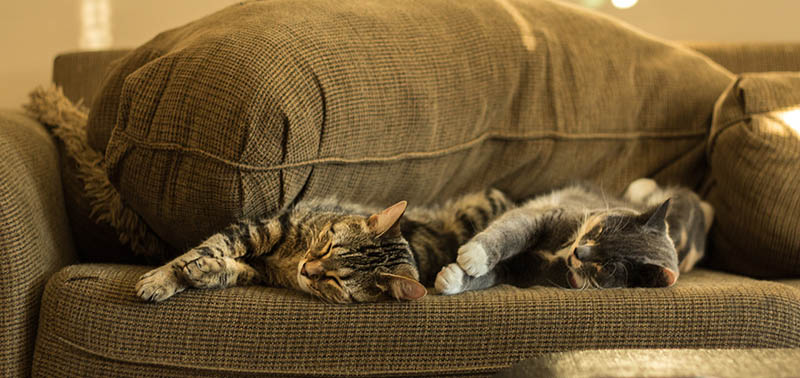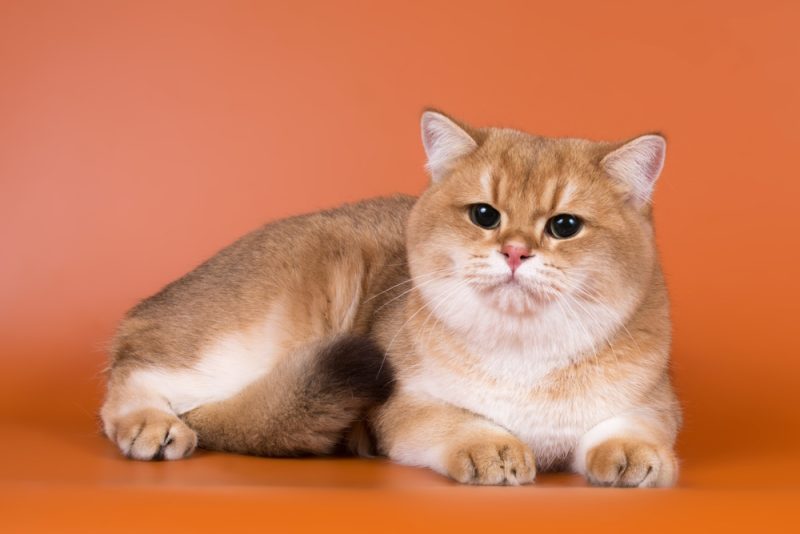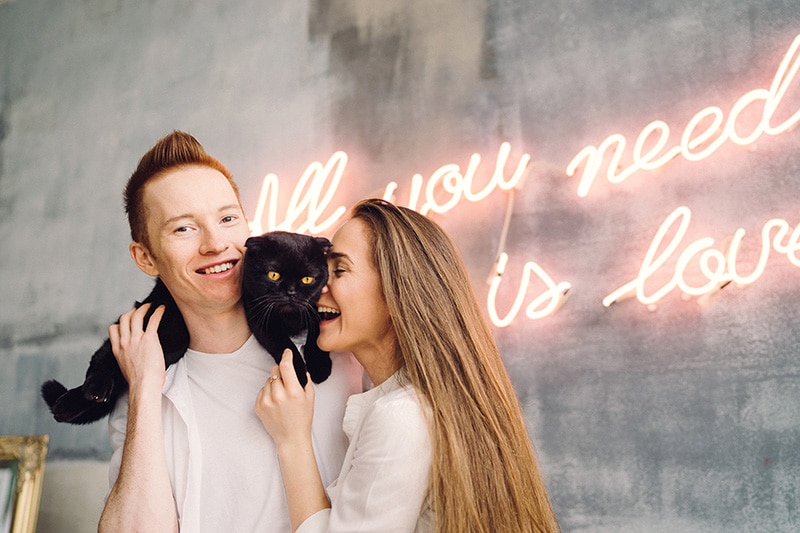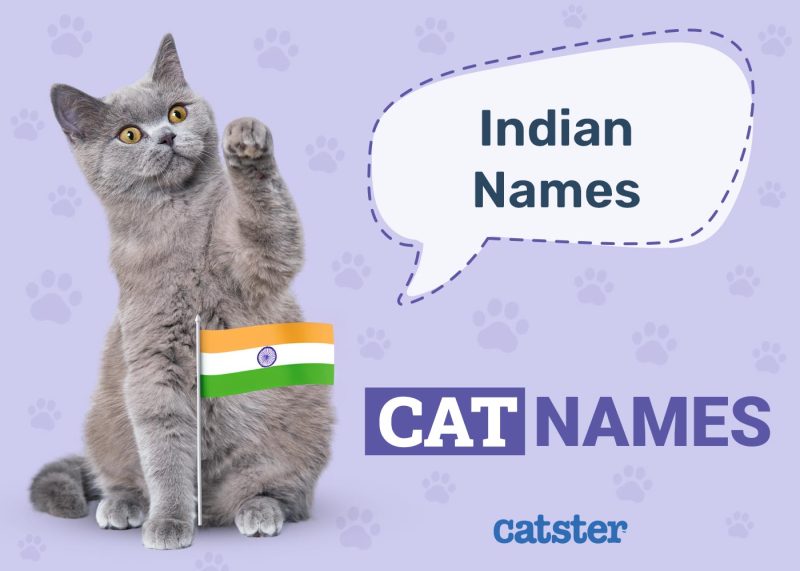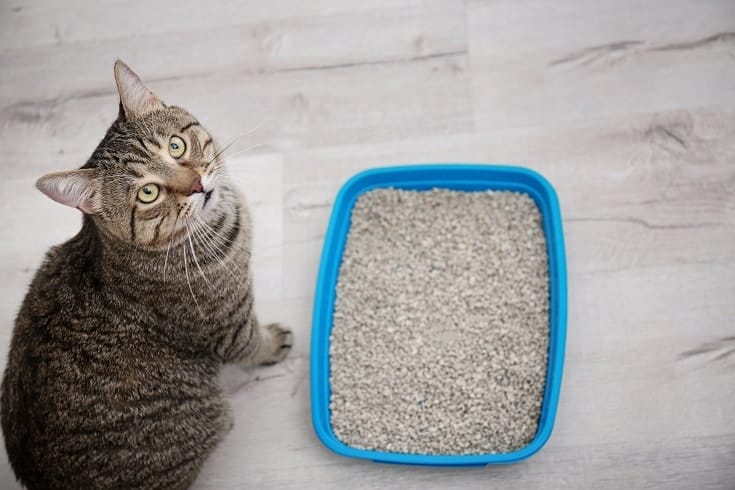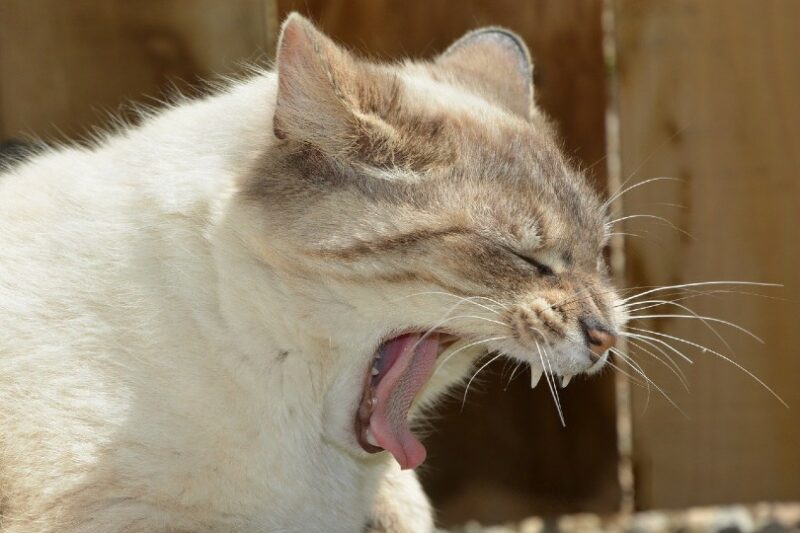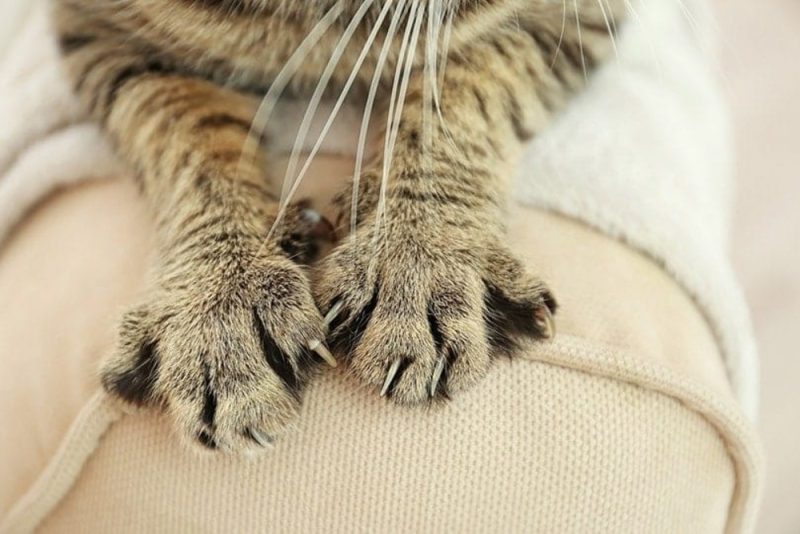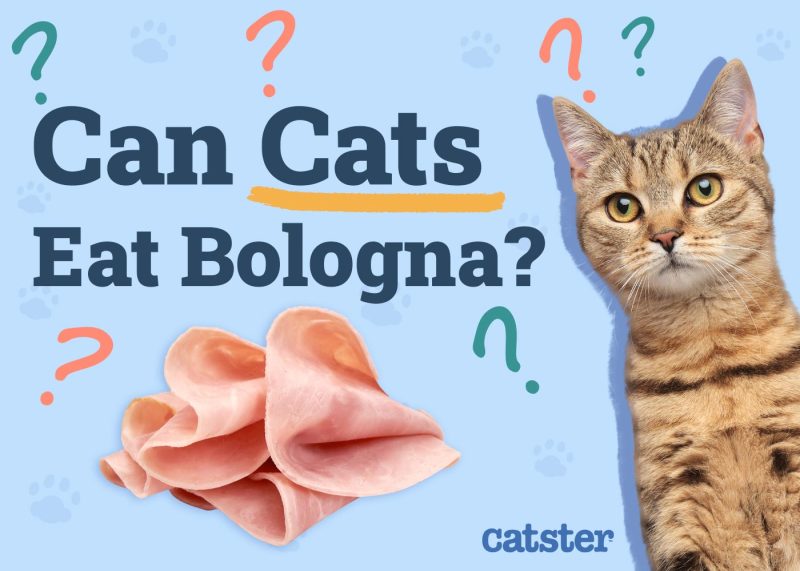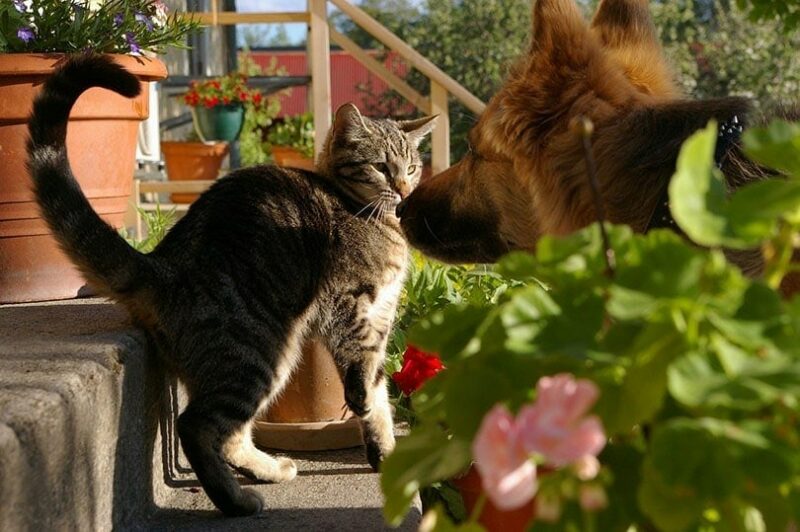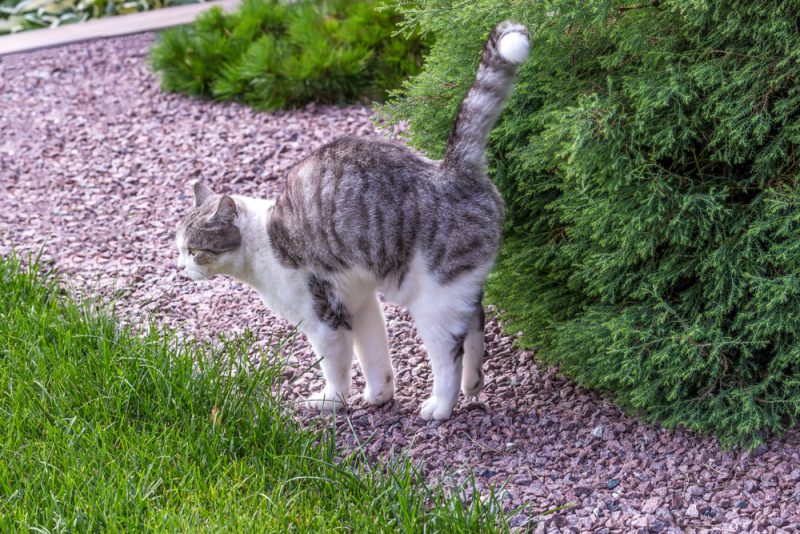There can be some seriously mixed feelings when two animals get together for the first time. Cats have a very heart-on-their-sleeve way of viewing the world most of the time. Whenever they are uncomfortable, scared, or otherwise not feeling so great about something, it is pretty easy to tell. Body language says it all.
Initially, your kitty friends might hiss, growl, swat, and show many other signs that they are thoroughly disgruntled with the newcomer. But do not worry. Soon, they will acclimate to one another and become pals in no time (fingers crossed). Here are some ways you can tell that your cats are starting to warm up to each other.

The 7 Ways to Tell if Your Cats Are Getting Along
1. Displaying Relaxed Body Language
When a cat is flustered, they let everyone know it. The ears go back, the pupils widen, and the vocalizations begin. Some cats might bolt for cover. Others will stand their ground. However, once your cat starts warming up to another, the body language will change quite a lot.
Rather than that uncomfortable stance, you will notice more relaxed behavior. They won’t seem tense anymore. They’ll meander about their way with their normal happy strides. There will be no more hurrying from place to place or being on edge. And this is just the beginning!
Soon, they will be perfectly fine rubbing and bumping up against one another, forgetting half the time that the other is even there.
2. Grooming Each Other

Grooming is a huge sign that your cats are starting to get along. This behavior is done in the wild and is entirely instinctual to show affection and communication between felines. Communal grooming is also called allogrooming.
Cats spend a whopping 30% to 50% of their day grooming themselves, making them highly efficient at hygiene maintenance. But when they groom each other, they display their bond and help their new friend live longer. That’s right. Their brain’s survival instinct tells them that clean cats live longer.
Cats know full well that some areas during grooming are really hard to get to. Sometimes, they just like to help a friend out.
3. Cuddling Together
Cuddling together is a surefire indicator that friendship is brewing. They are getting well acquainted if you notice them snuggled up in front of a sunny window or piled together on the couch.
They tend only to do this when they like the other party. When they cuddle, they seek warmth and a sense of protection. This method of socialization starts very early in kittenhood, and most cats continue the behavior long into adulthood.
If you are on the couch watching a show or reading a book before bed, try to get both to join you so you can distribute equal attention. It might help speed up the process. You never know! It could also help to give them both attention simultaneously so you can be the mediator.
4. Roughhousing Together
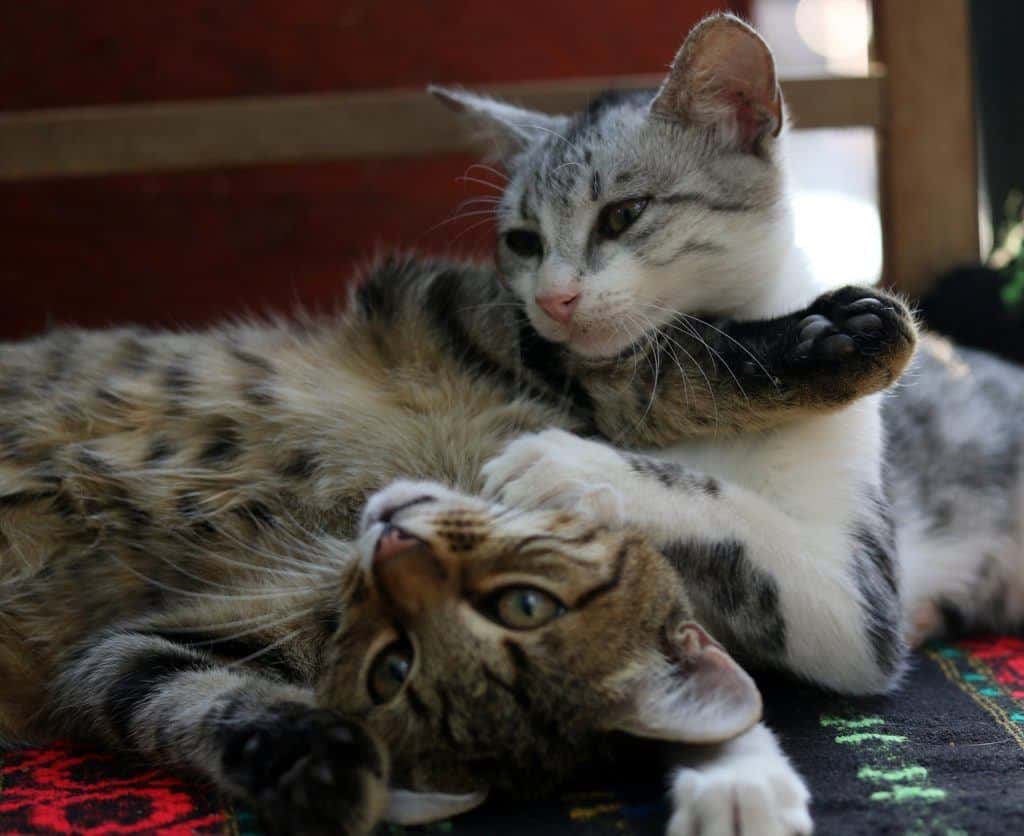
Playing and aggression can look very different, but it can also be confusing sometimes. Have your cats started romping around together? If you’ve noticed them chasing one another throughout the house or getting frisky when everyone is asleep at night, they might be developing their bond.
After all, things can get a little heated up in the best play sessions! They can kick, growl, taunt, scratch, ambush, and stalk each other like regular wild cats! Sometimes, they change roles. One will be the predator, the other the prey—and back, forth, back, forth.
Playing aggression is perfectly acceptable and routine in your cat’s daily life. It’s quite healthy for them to release any pent-up energy to avoid potentially destructive behaviors.
But if you’re having trouble telling whether everything is happening in good fun, always pay attention to the ears, as they are a telltale sign. If your cat gets aggressive, its ears will be drawn back, and the tension becomes much more visible. It might be accompanied by vocalizations showing their detest and unease.
It’s crucial never to let cats fight it out, as they can severely injure each other with their sharp teeth and claws. Instead of physically trying to get in the middle, as this can hurt you, try to distract them with loud noises or even a stream of water.
5. Eating Peacefully Together
If your cats don’t want to care for each other, they might not enjoy sharing their food dish. However, if you’ve noticed them purring over brunch, they are already well into days of companionship. They will tag team you in the mornings to demand a feast and enjoy it as a team.
Now, that’s not to say that some cats can’t be aggressive with food and still really like their roommates.
Food scarcity causes their instincts to take over, making them more food-aggressive than others. Some cats taken from their mother too early can always exhibit food aggression. This is also a typical behavior in stray or feral cats.
So, remember that the possessiveness over the food bowl doesn’t always mean they don’t like other cats—it just means they prefer their own portions.
6. They Touch Noses
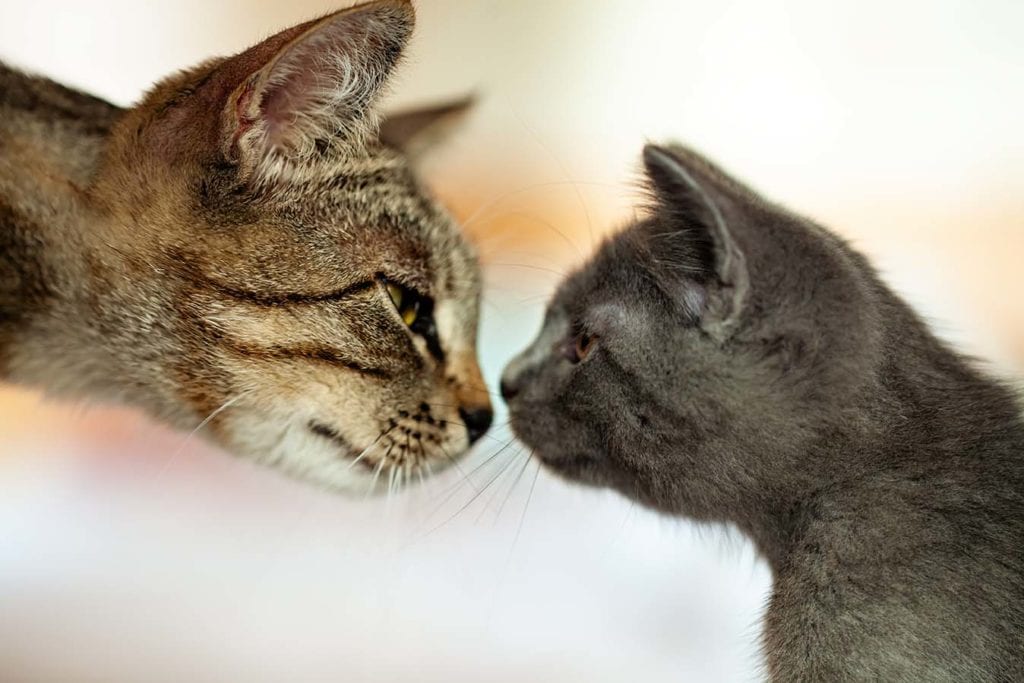
We all know that cats are scent-based creatures. They pick up most of the information from their surroundings by smell alone. So it’s no surprise that touching noses has something to do with scent and pheromones.
Typically, this behavior is done in a friendly greeting. It allows both cats to get more information about each other more intimately. Sniff, sniff, now we’re friends.
Not only can they get information about the individual cat, but they can also smell where the other has been or even develop some type of social hierarchy. In some cases, nose-touching can lead to a catfight if there is a power struggle.
If you have noticed your cats touching noses and one backs away, the dominance roles will likely be established and won’t need to be challenged.
7. They Bunt One Another
You might see your two kitties head-butting one another. This behavior is called “bunting”, and it’s in response to showing affection and marking territory. Isn’t that sweet? Your cats are claiming the other as their own.
Cats carry scent glands in their heads and cheeks. You might have also noticed your cat bunting your hand, forehead, and even areas of your home. Even though this is a possessive quality, it is also a surefire sign of good feelings.
When cats rub to communicate closeness, it’s called allorubbing. It often happens in feral cat colonies, and it helps deflect the need for conflict or violence.
So, if you notice that your cats are rubbing heads, this can be a great sign that the friendship is taking off.

If Cats Still Won’t Get Along
Sometimes, it seems like certain cats just don’t pair well, no matter what you do or how you introduce the two. One cat might be completely submissive and ready to be friends; the other won’t have anything to do with it.
Or, there might be a power struggle between two dominant cats, making it challenging to see eye to eye. If this happens, it typically resolves in time with enough adjustments on either end. However, sometimes cats will just simply not get along no matter what you do.
The only thing you can do as a pet parent is try to make the environment as peaceful as possible for them both. If the cats are left to their own devices, they can do some serious harm, causing injury and a laundry list of other ailments that aren’t good for anyone!
- Don’t let cats fight it out
- Make sure all cats in the home are spayed/neutered
- Separate toys, food bowls, and litter boxes
- Provide several perches, hiding spots, cat trees, and activities
- Don’t interfere with an aggressive cat
- Reward desirable behavior
- Try pheromone diffusers
- Separate the cats as much as possible
- Potentially consider medication for extreme anxiety or aggression
The reality is that each cat will be different in the way they interact with others. If you have a particularly challenging case, you can speak to a veterinarian or seek help from a feline behavior specialist for additional tips and tricks.
If you need to speak with a vet but can't get to one, head over to PangoVet. It's an online service where you can talk to a vet online and get the advice you need for your pet — all at an affordable price!


Conclusion
Friendship is nearly inevitable if two cats are in your house together long enough. In rare cases, some felines might never see eye to eye. If that’s the case in your home, there are ways you can implement for them to coexist without too much of a problem.
If your cats are warming up to one another, you should see one or most of these behaviors starting. If it’s yet to happen, keep going. At least you know what to look for. Hopefully, your felines will be two peas in a pod soon.
Featured Image Credit: Aleesha Wood, Unsplash
